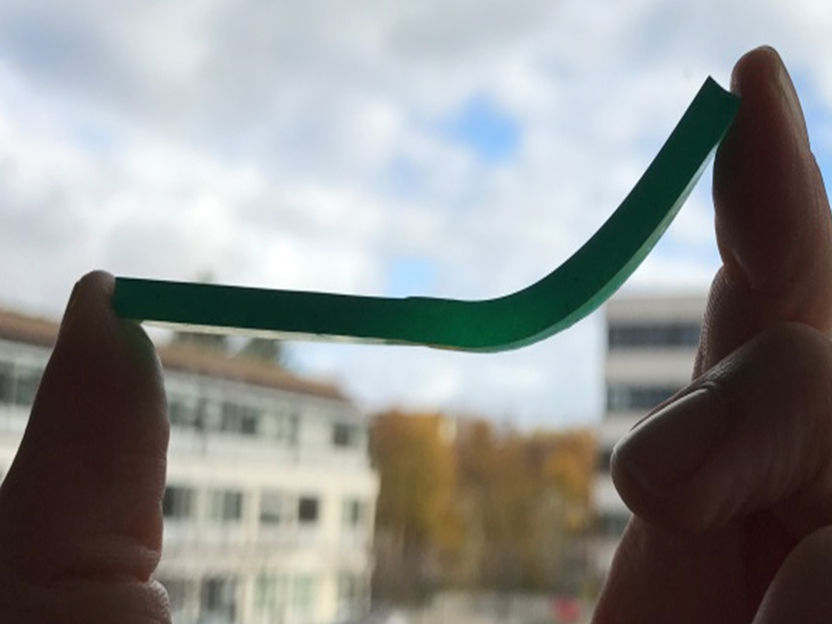Flexible bonding: hard and soft at the same time
Advertisement
To connect components with each other, gluing is preferred today instead of welding, riveting or using screws. That makes cars, planes and agricultural machines lighter. The requirements placed on the adhesive are high, though: it has to be flexible enough to compensate for stress peaks in the joint zone while still providing a rigid connection in the surface. Fraunhofer researchers have now developed the adhesive „MetAK“, which can be hard and soft at the same time.

Flexible and hard all in one piece: the new plastic metamaterial MetAK.
© Fraunhofer LBF
"MetAK is comparable to an ordinary two-component adhesive from the hardware store, only that more components are mixed together in ours," explains Dr. Roland Klein, a co-developer of MetAK from the Fraunhofer Institute for Structural Durability and System Reliability LBF in Darmstadt, Germany. The production is simple, because the components do not have to be elaborately synthesized in the laboratory; they are commercially available. "The exact formula is a secret of ours," says Klein.
Degrees of hardness are individually adjustable
The stiffness of the initially viscous material based on synthetic resin can be determined by two hardening mechanisms: irradiation with UV light, and heat. "The areas that should remain flexible are not irradiated; they are instead treated with heat, which cures them. They combine optimally with the irradiated, fixed areas to form a network. Their consistency is then rubbery" – ideal for dynamic loads, such as those that occur in the connection between a car engine and body, for example. In this situation, the joining zones in particular are exposed to high stress peaks and vibrations – a problem with which even bonded aircraft components, wind turbines or train construction have to contend.
"MetAK has the advantage that the rigidity is very easily adjustable. You no longer need many different adhesives with different degrees of hardness; you can flexibly adjust the material to the frequency range of the vibrations and compensate for them." The longer and more intense the irradiation with UV light is, the harder the material becomes. After the final heat treatment with a radiant heater or in the oven at 100 to 180 degrees (depending on the application), MetAK is no longer deformable, and the chemical reaction is completed.
Ideal for orthopedic applications
Not only can MetAK be used as an adhesive; it can also be cast in a specified shape. Radiation and heat can then be used to produce hard and soft zones with flowing transitions – attractive for orthopedic applications, for example. Klein’s colleague Tim Bastian Klaus is working on a MetAK corset which supports the deformed spine of scoliosis patients in the right places but which at the same time yields flexibly in others. This would help to avoid painful pressure points and increase wearing comfort. In addition, MetAK makes it possible to produce corsets in individual, modern designs and with a permeable structure –for patients (who are mostly adolescents), these are important criteria that determine the frequency of wear and, therefore, the success of the therapy. Together with design student Anja Lietzau, Klaus won the Fraunhofer Ideas Competition 2017 for his idea. "The material could also be used for other orthopedic applications, such as orthopedic shoes or prostheses," says Klaus.

































































